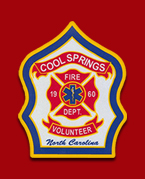|

Cool Spring on 1886 map
Birth of a Village
There is much speculation about when and how the community of Cool Spring started. During the years after the American Revolution there were very few families in the area. Unfortunately there are no homes here still preserved from that time period. In fact, there is little documentation of this area prior to the mid-1800’s. However, history shows that Cool Spring was already likely a bustling meeting place even before the Civil War. As early as 1829 a road from Statesville to Mocksville (established in 1839) took travelers directly through the area. The old road path is still closely followed by present-day US Highway 64.
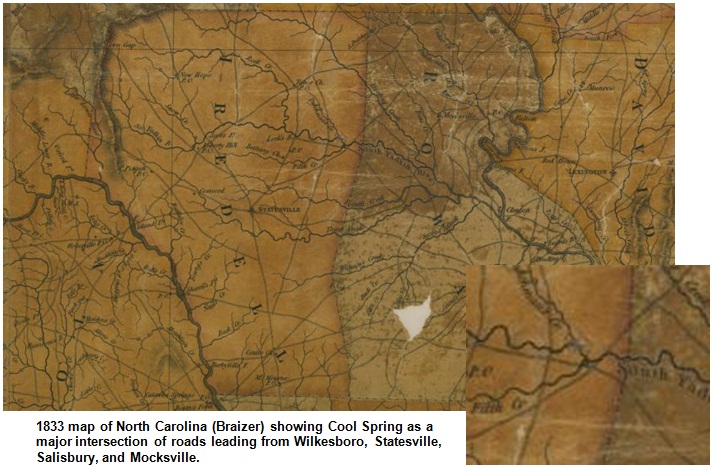
Being about halfway between Statesville and Mocksville, Cool Spring was an ideal location to buy, sell, and trade, attend religious services, send and receive mail correspondence, and stay connected to local news, all without having to take the 3-hour carriage trip into town.
Some of the early residents of Cool Spring included J.R.B. Adams, who lived in this large two-story home located on present-day Bridge Bottom Road. Built in 1817, it is still standing today and is the currently the oldest recorded home in Cool Spring.
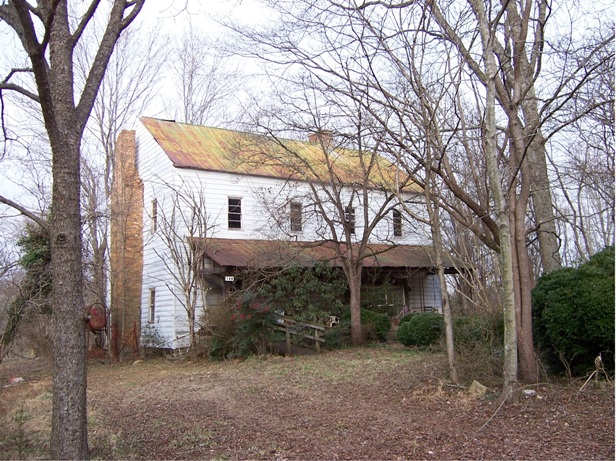
One of the more recognized homes in the community is this two-story antebellum on present-day Cool Spring Road. Formally known as the old “Montgomery House”, it was built around 1850. It is currently listed in the National Register of Historic Places as the “Henry Eccles House.”
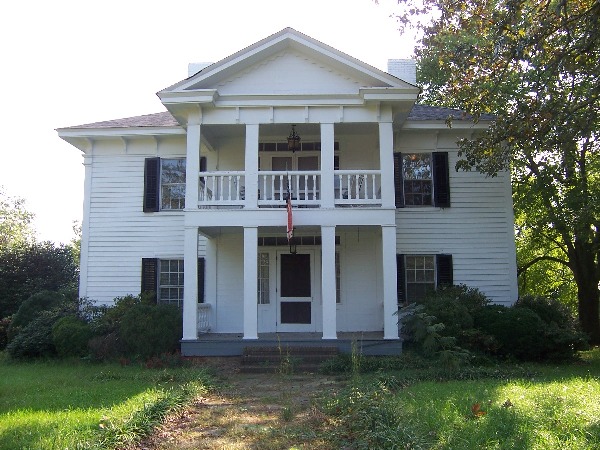
The John B. Knox home was another notable home. Built in 1826, it succumbed to fire sometime before the 1980's. No known picture exists but it was located near the v-point at present-day Cool Spring Road and Garden Valley Road.
Another home near that spot is a one-room cabin known today as the "Jacks Home". Not much is known about this little house, but it still stands today.
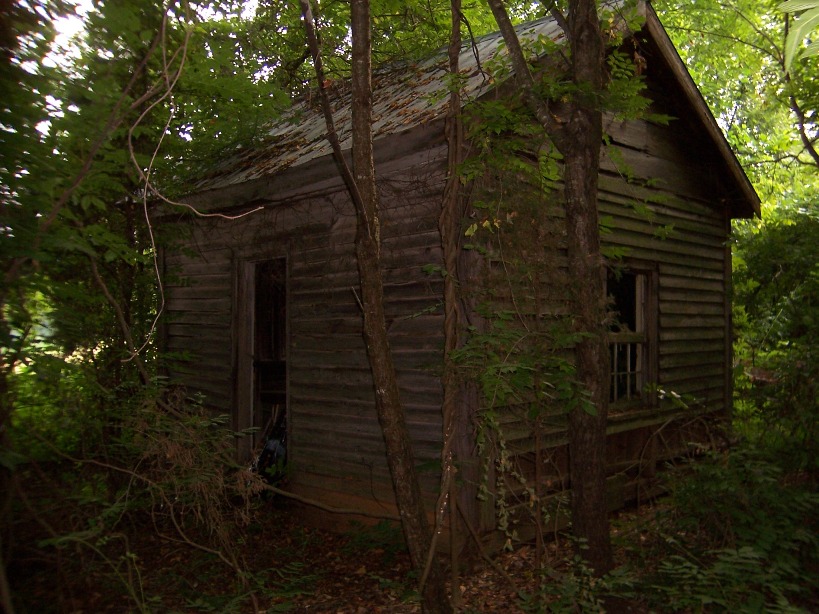
Tha
Early Business and Life in Cool Spring
As early as 1852, the same year the United States issued its first stamped envelopes, mail correspondence was conducted in Cool Spring. The newly established post office, which opened May 27th of that year, was surely the place to stay abreast of all the happenings of the area. The Postmaster was Mr. Marshal Turner. He remained in the position until David J. L. Knox took over on January 17, 1859. With the secession movement spreading, the United States Post Office Department continued to handle the mail of the seceded states as usual until June 1, 1861. On July 3, the post office in Cool Spring became a Confederate post office. However, it closed at the end of April 1865, likely as a result of the war.
The locals of Cool Spring made their living in a variety of ways. Raising livestock and farming were very common. You could see men like Ebenezer Holman and W.T. Montgomery if you were in the market for wool. For general merchandise you could visit one of the area’s general stores, like the dry goods store operated by Mr. H. C. Eccles in 1868. Another store was operated by George F. Shepherd around the same time.
Given the presence of the South Yadkin River, the abundant waters of Fifth Creek, and other major creeks and streams, there were several mill operations in the area. Henry Turner operated a saw mill on Fifth Creek and also produced corn and flour products as early as 1868. Ebenezer Holman, E.E. Holman, and Henry Farmer also operated their own mills around that time.
Several prominent farmers in the area included Henry Turner, (who farmed over 600 acres), J. E. Adams, E. R. Tuck, and Franklin Gay.
The first recorded town physician was Dr. J.R.B. Adams.
And by the early 1900’s, Cool Spring has a distinguished educational academy, several church congregations, many general stores, and several mill operations. One general store, operated by D.P. Sartin, dealt in dry goods, notions, shoes, groceries, and school supplies. It was located a short walk from the academy, not far from the spring. The building used to sit in the v-point where Garden Valley Road connects with Cool Spring Road today.
Mr. Sartin lived in a beautiful two-story white house (shown below) across from the academy, atop a hillcrest surrounded by large trees. The house was built in 1907, but has unfortunately since been demolished.
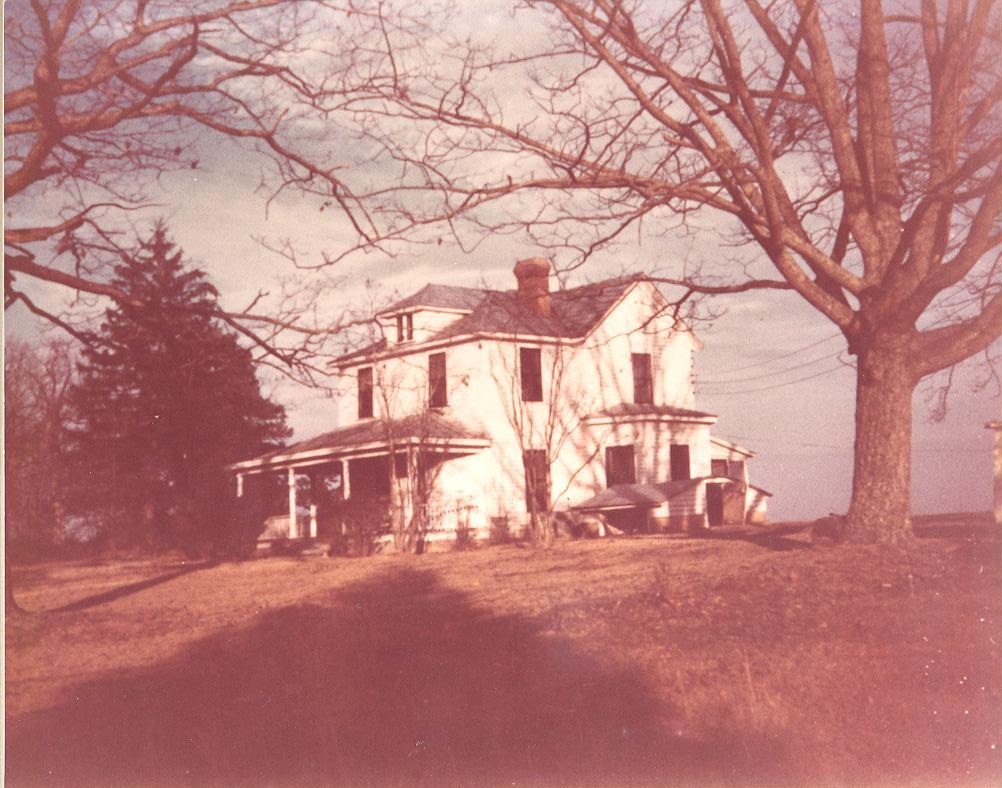
Another general store from the early 1900’s (shown below) was operated by Fred L. Houpe.
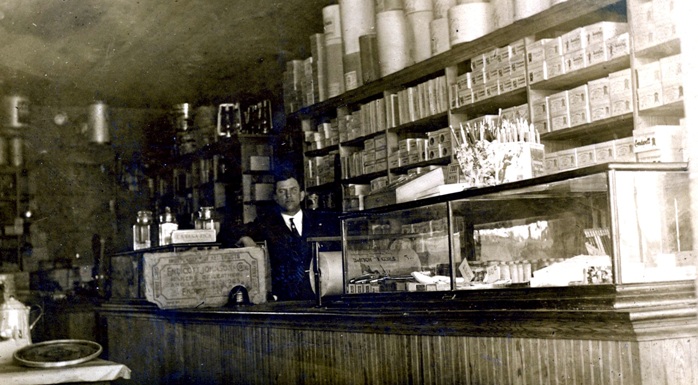
Here's a few examples of the many houses built from the early farming era.
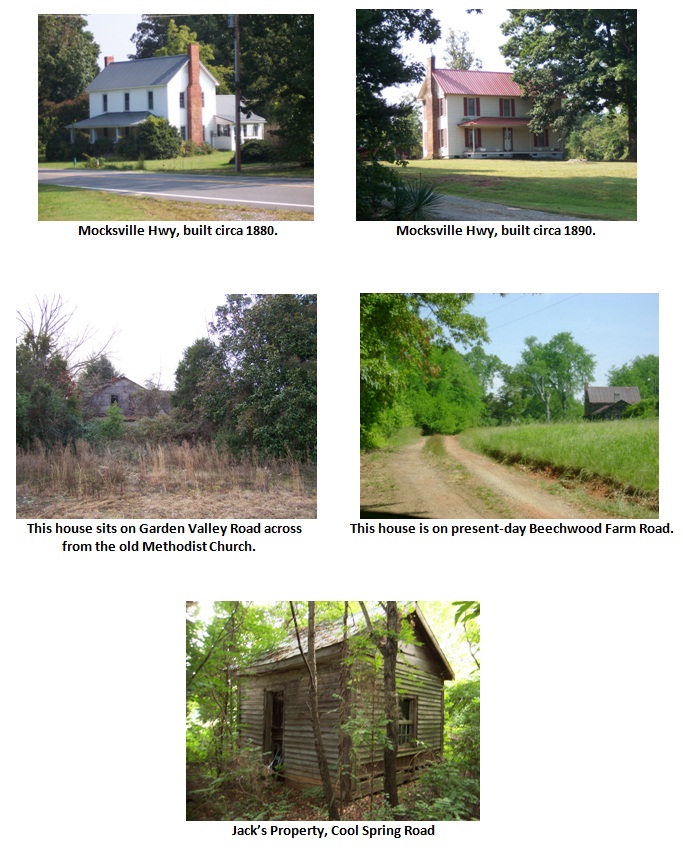
Cool "Spring" or Cool "Springs"
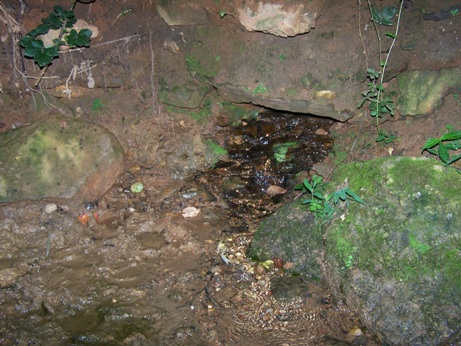 Many people refer to the area today as Cool Springs. In fact, the North Carolina Department of Transportation officially recognizes the area today as Cool Springs. There is no doubt that there are many springs located throughout the area. But there is decidedly only one spring from which the area likely derived its name. It is still active today and produces clear, cold water. Remnants of stonework built around the spring can still be seen, where local citizens and other groups have worked to keep the site preserved. And if the issue is not complicated enough, the 1860 U.S. Census gives the area the name “Cool Springs P.O.” Many people refer to the area today as Cool Springs. In fact, the North Carolina Department of Transportation officially recognizes the area today as Cool Springs. There is no doubt that there are many springs located throughout the area. But there is decidedly only one spring from which the area likely derived its name. It is still active today and produces clear, cold water. Remnants of stonework built around the spring can still be seen, where local citizens and other groups have worked to keep the site preserved. And if the issue is not complicated enough, the 1860 U.S. Census gives the area the name “Cool Springs P.O.”
However, Cool Spring was officially named in 1868 by the state legislature. Earlier that year the North Carolina Constitution was rewritten, which incorporated a new method for organizing the counties throughout the state. Upon ratification of the rewritten constitution, each county was subdivided into townships with three elected officials presiding in each township: two justices of the peace and one clerk. These officials served two-year terms as the governing body for each township, regulating roads and bridges, as well as managing taxation and property assessment under the supervision of the county commissioner. Each township also had a three-member school board and at least one constable. However, the constitution was amended again in 1877 and all townships were stripped of their government system. Township titles were maintained as informal county subdivisions (sometimes for the census and infrastructure maintenance) but townships would no longer have any official government function.
The name Cool Spring remained and has consistently stood the test of time. It has also left its mark on several organizations from the turn of the 20th century which are still functioning today, including Cool Spring Elementary School (formally Cool Spring Academy), Cool Spring Methodist Church, and Cool Spring Ruritan Club.
Then there’s the evidence in state archives. Postal markings from 1852 verify that mail delivered to and from the area was indeed addressed as “Cool Spring, NC”. And early issues of “The Landmark”, Statesville’s early newspaper, generally refer to the area as “Cool Spring”.
So where did the name come from? There are several stories about the origin. First, it is said by some that the name came from a spring with unusually cold water located behind the old Montgomery home on Cool Spring Road. According to the handed-down story, the thermometer of Dr. J.E. McLaughlin showed the water to be two degrees cooler than any spring in that part of the country.
Another story tells of a Revolutionary War soldier stopping at the spring for a drink of water exclaiming, “This is a cool spring!”
One tale is that the local Indians called the area the “place of many springs” and out of that came the name Cool Spring.
And yet another story is that, as settlers moved west, they came through Cool Spring in wagons and the word would pass back to other travelers “be sure and stop at Cool Spring; it’s a good campground and there’s a good spring there.”
Regardless of the origin, Iredell county natives have always known Cool Spring as a peaceful, prosperous community with beautiful landscapes, clean waters, and abundant resources.
Cool Spring’s “Sister” City
It interesting to note that there was more than one Cool Spring in North Carolina at one time. A community by the same name was located in Washington County, located near the coast. Records show that a post office existed in this area as early as 1826. However, the name of the community (and the post office) was changed to Scuppernong in 1849.
Churches: Past and Present
Cool Spring and its nearby communities currently boast over a dozen churches from several different demoninations. Many of these churches originate back to the 1800's. For example, in 1846 a group of Presbyterian members from the Union Church in Oak Forest began Sunday morning worship services in their own newly built church building, located near the Fifth Creek.
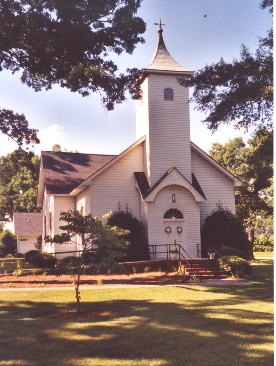
Fifth Creek Presbyterian - Present Day
Cool Spring Baptist church was located across from the school on Mocksville Highway, however it no longer exists today.
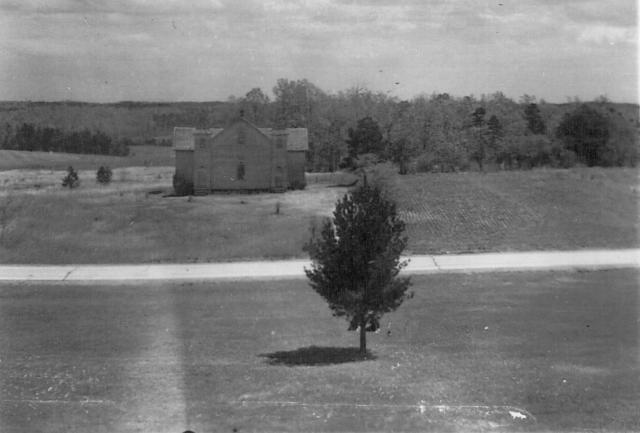
Cool Spring Baptist - Before 1943
Cool Spring United Methodist was chartered in the early 1900's. The original church was located on present-day Garden Valley Road. As the church grew, the moved and built a new, modern church building on Mocksville Highway near the school. In fact, they just recently celebrated their centinniel.
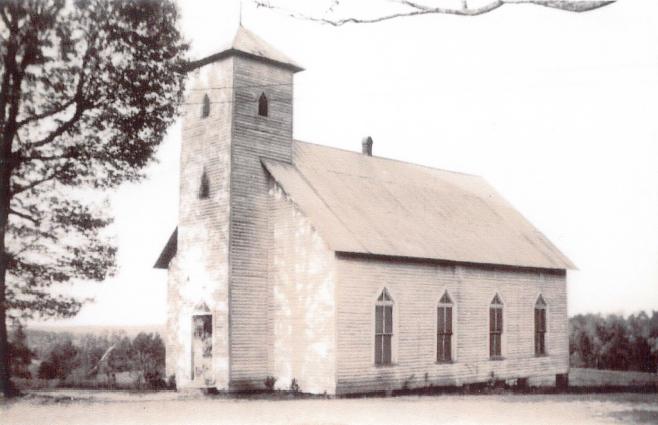
Cool Spring United Methodist Church - 1940
Education in Cool Spring
Cool Spring Academy
Formal education has been part of the spirit of Cool Spring for two centuries. Though no one really knows when the first actual school was built in Cool Spring, there are records that show there was a school as early as 1813, operated by Robert Lazenby. And there is solid evidence that a private tuition school or academy existed after the Civil War. An article in The Landmark newspaper from 1875 announces that classes were to resume in January under Principal Henry Theodore Burke, and stated the cost of tuition and board. The student population that year was around fifty male students. Professor Burke left that year for a position in Rowan County and Professor Duckett of Raleigh filled the vacancy. However, in 1880 Professor Duckett left for a position in Apex and the academy was assumed to have been closed, as an article in The Landmark stated that Cool Spring was now "without a school or so much as the prospect of one." But in June of that year some good news came to the community when they learned that G.A. Greene, educated at Chapel Hill, was going to assume charge of the Academy beginning that fall. The history for the academy from 1884 to the end of that century is a little hazy, but the academy likely saw several Professor's come and go.
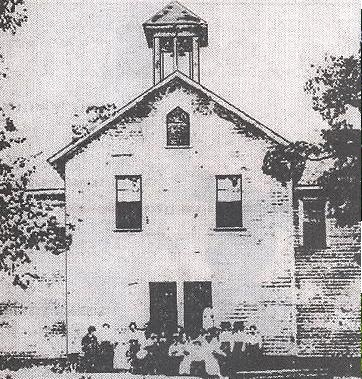 By 1898 the academy had become known as "Tedious Hill", a name that developed over the last twenty or so years, and the school committee decided that it was time to construct a new school house. The bid for construction was posted and some of the school's leaders rode on horseback from house to house, soliciting support for the construction. Professor John Franklin Mitchell of north Iredell promised to run the school when the building was complete, but it would take the collective efforts of the community to get the project completed. Several prominent citizens pledged a total of $295 to build the school house. They also wrote a constitution and by-laws. The preface of the resolution read: "We the people of Cool Spring and surrounding communities realizing the need of a good Academic school in our section of the country, and believing such a school will provide a blessing educationally, morally, socially, and religiously..." By 1898 the academy had become known as "Tedious Hill", a name that developed over the last twenty or so years, and the school committee decided that it was time to construct a new school house. The bid for construction was posted and some of the school's leaders rode on horseback from house to house, soliciting support for the construction. Professor John Franklin Mitchell of north Iredell promised to run the school when the building was complete, but it would take the collective efforts of the community to get the project completed. Several prominent citizens pledged a total of $295 to build the school house. They also wrote a constitution and by-laws. The preface of the resolution read: "We the people of Cool Spring and surrounding communities realizing the need of a good Academic school in our section of the country, and believing such a school will provide a blessing educationally, morally, socially, and religiously..."
By the following year the school showed signs of becoming a great success and Professor Mitchell published a school catalogue and began advertising in the newspaper. In describing the school house, he boasted of a large two-story building with two large classrooms on the first floor, and a large chapel for "preaching, lectures, and entertainment." That year enrollment reached 110 pupils from 6 counties.
A wonderful and vivid description of the Cool Spring community is found in the 1899-1900 catalogue for the Academy:
"The little village of Cool Spring, situated in one of the best sections of Iredell county, is a most desirable location for a Preparatory School. It is in the midst of a fine agricultural region. Roads leading from Salisbury, Statesville, Wilkesboro, and Mocksville render the village easily accessible from all directions. The nearest railroad depot is only eight miles distant. A daily mail places us in direct communication with all parts of the country.
Cool Spring has long been noted for its healthfulness. The surroundings are such that there can be no local causes for sickness. The atmosphere is genial, the water cold and pure, the site is elevated and the drainage almost perfect. With all of these conditions surrounding us, we believe that no healthier school village can be found in this section of the State.
The high character of the community aids much in making Cool Spring an ideal school village. The people are intelligent, religious and progressive. The society is of the highest and best type, and the moral influences are unsurpassed. The community is comparatively free from the dangers and temptations which surround student life in many of our less favored institutions of learning. Parents will find Cool Spring a most desirable place to educate their sons and daughters."
.jpg)
Class photo, circa 1905.
Neighboring Communities
There were several neighboring communities to Cool Spring, and many still bare the same names even today.
Oak Forest
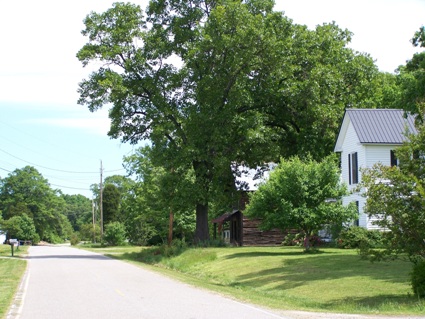 Oak Forest is a small community about 5 miles west of Cool Spring along the road to Mocksville and has been on the map as early as 1872. The area saw some prominence during the late 1800’s. There were several nice homes, a church, a general store, and a post office. Some of these buildings and homes are still here today and are located on Oak Forest Drive, which was originally part of the road to Mocksville. In fact, you can still see the old road bed in the woods. The old road continued on eastward to about where Swann Road meets Mocksville Highway today. Oak Forest is a small community about 5 miles west of Cool Spring along the road to Mocksville and has been on the map as early as 1872. The area saw some prominence during the late 1800’s. There were several nice homes, a church, a general store, and a post office. Some of these buildings and homes are still here today and are located on Oak Forest Drive, which was originally part of the road to Mocksville. In fact, you can still see the old road bed in the woods. The old road continued on eastward to about where Swann Road meets Mocksville Highway today.
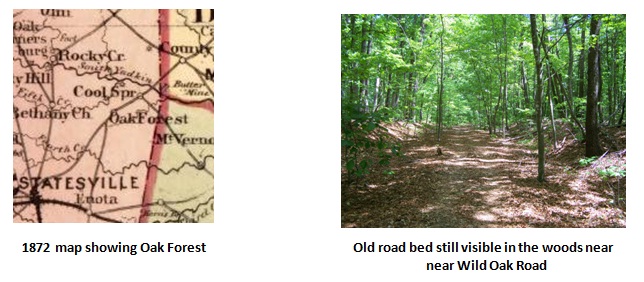
.jpg)
The aerial view above shows where the Mocksville road used to be as it left the Oak Forest community. This section runs between present-day Oak Forest Drive and US 64 at Swann Road.

In 1899 John Gunn open this general store. It housed the Oak Forest Post Office at one time.
John Gunn Homeplace
Vance
Vance is a small community located about mid-way between Statesville and Cool Spring. In the early 1900’s Vance had a school and a post office located at the end of present-day Vance P.O. Road. The buildings are long gone.
After a fatal fire in the Fifth Creek community in 1960, a fire department was built to serve the eastern end of Iredell County. The land for the department was located in Vance.
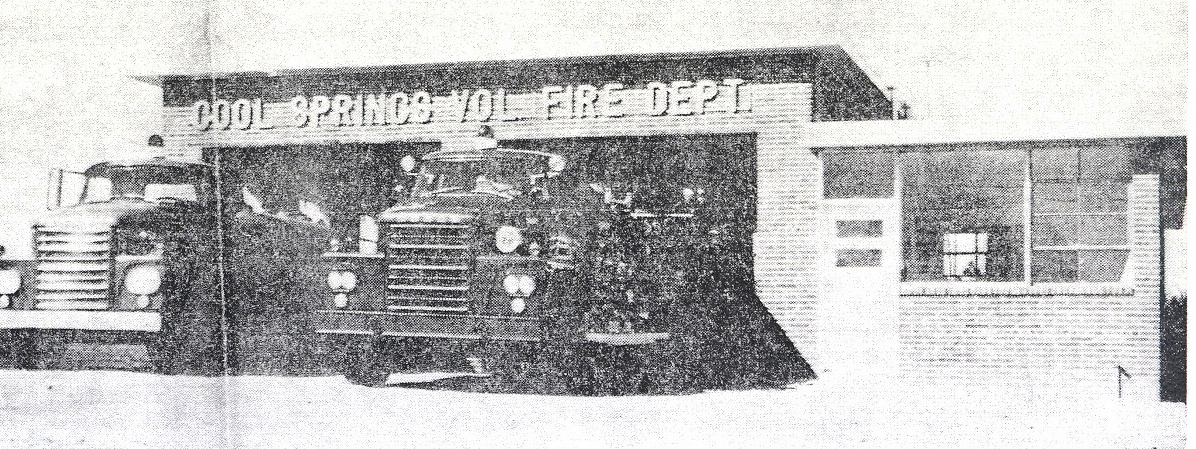
Cool Springs Volunteer Fire Department - 1961
Beaver's Cash Store was a popular store in Vance and still operates today as Beavers Country Store.
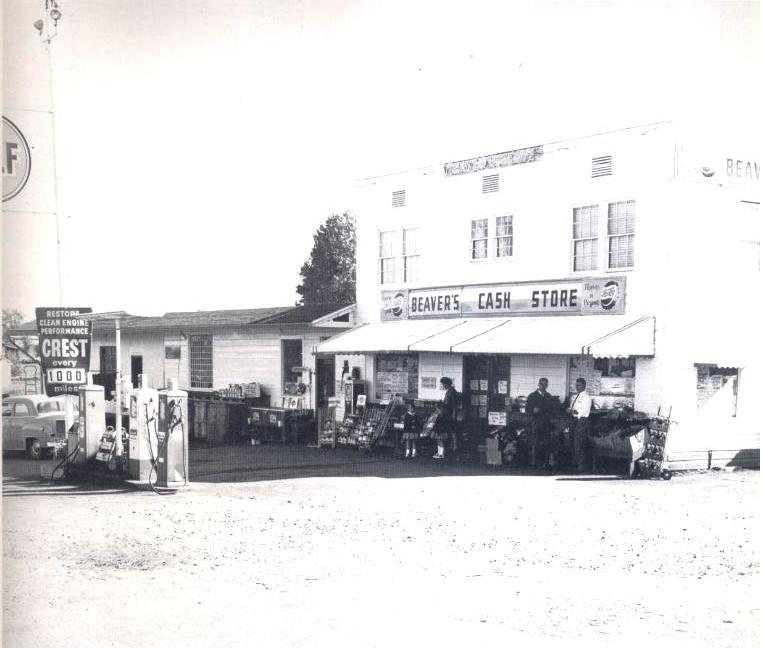
Beaver's Cash Store - 1961
Elmwood
Elmwood is a little community south of Oak Forest, near the Rowan County line. This area was home to a large plantation dating back to 1753, built by John McElwrath. Then in 1818, a stately Federal-style house was built to accomodate the growing plantation. Both houses are still around today and the property is known as the Darshana Hall Plantation.

Another home from the area was known as the "Waddell House".
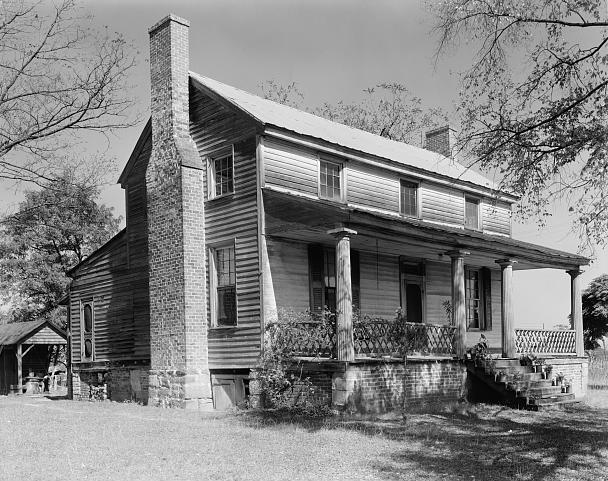
There was a train stop in Elmwood as early as 1884. Records from 1903 reference bales of cotton being shipped regularly from this station.
And there was a general mechanisie store as early as the 1920’s, operated by J. J. Long and his son.
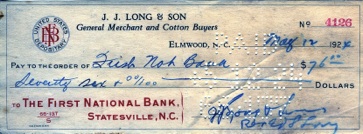
| 

